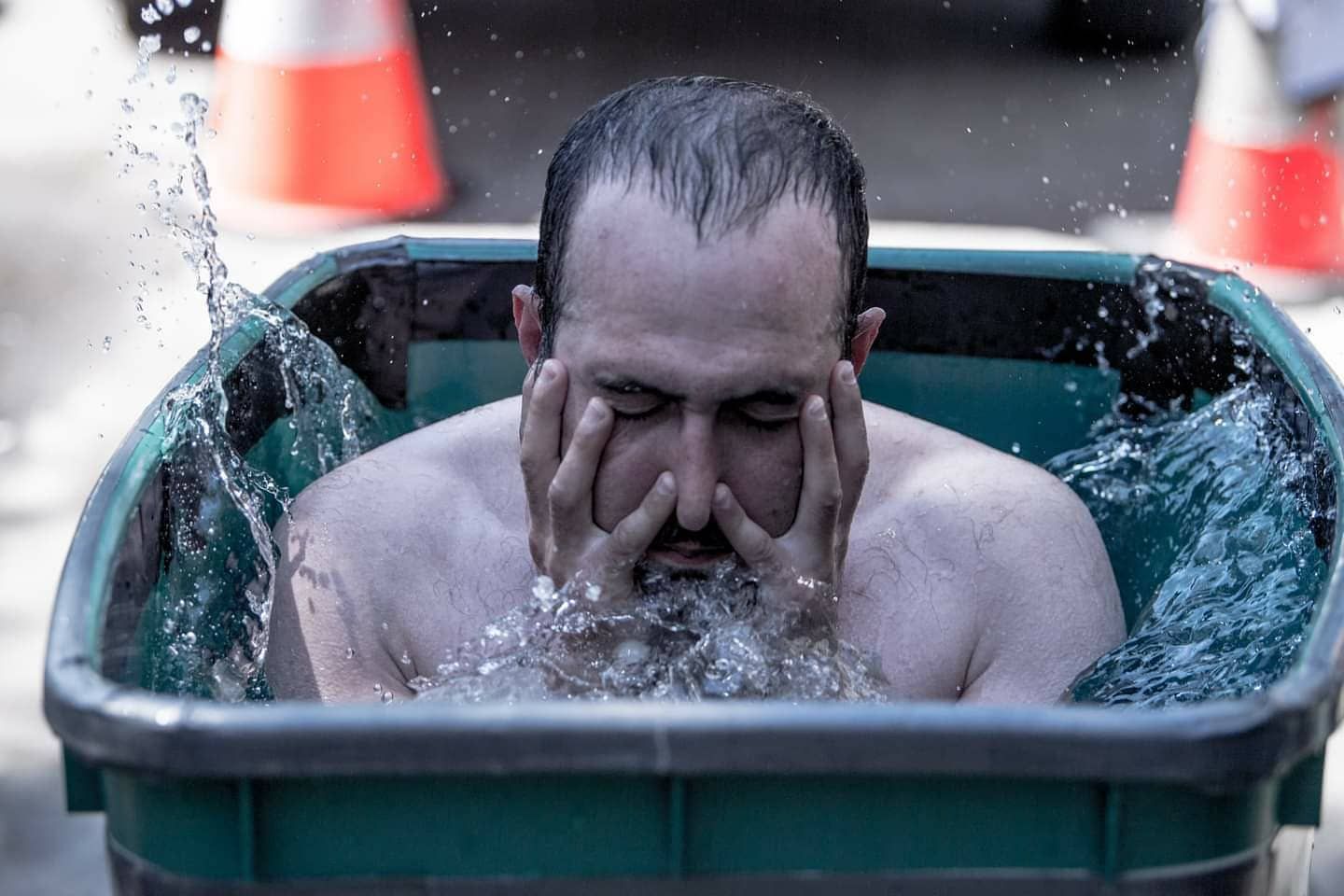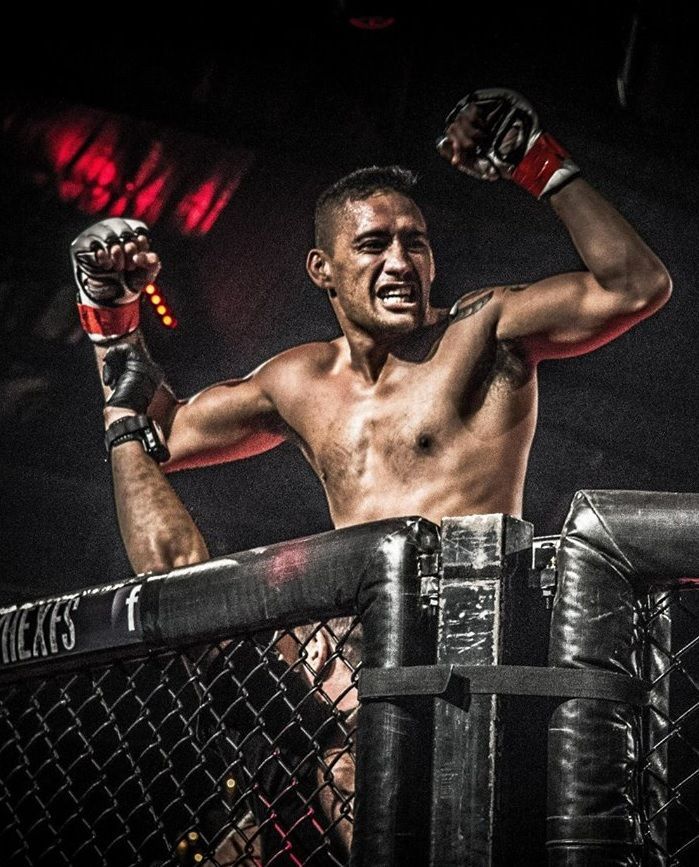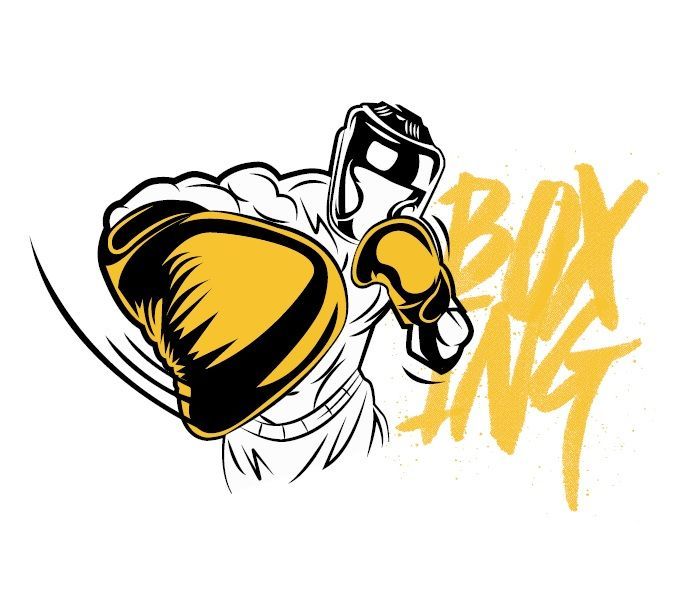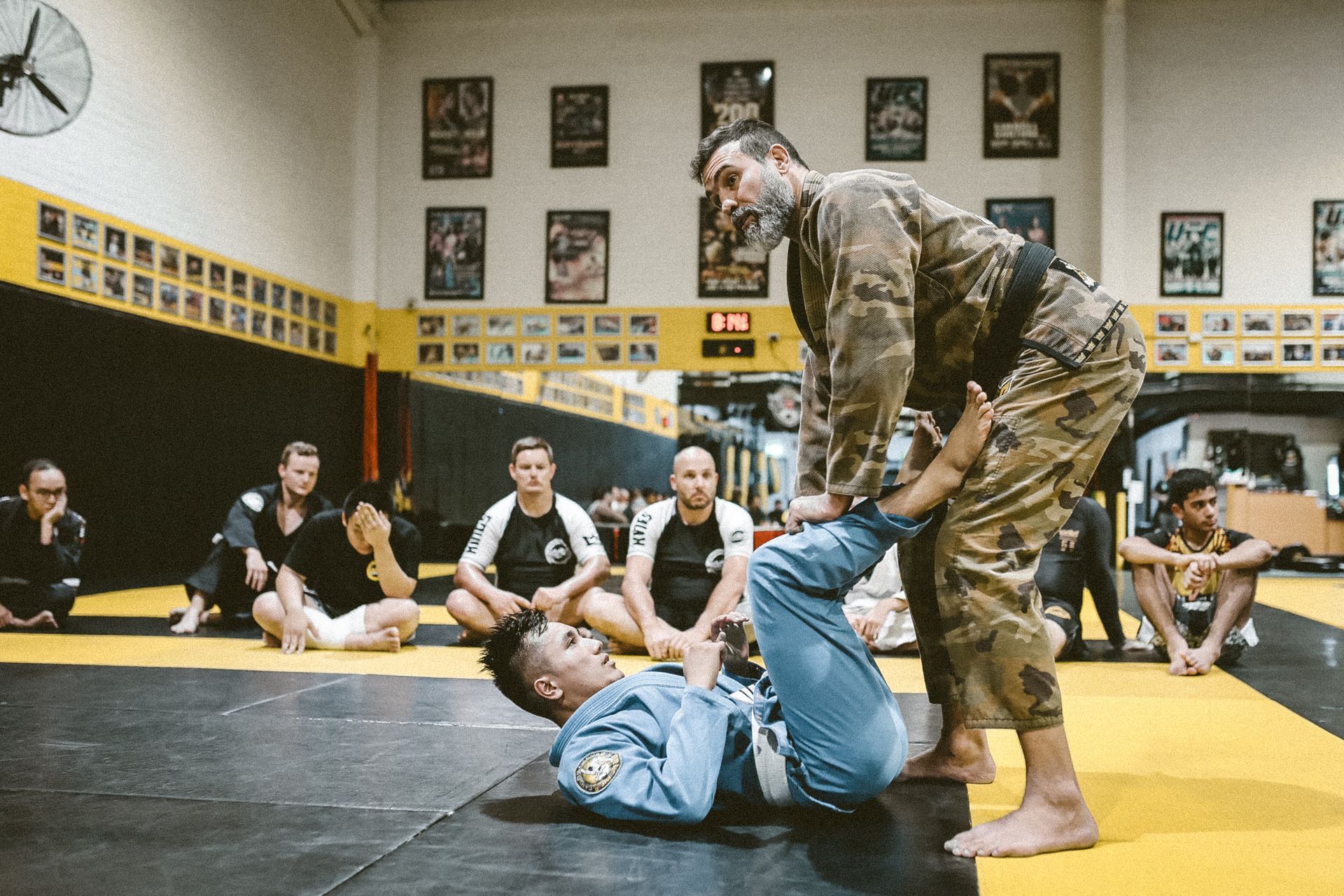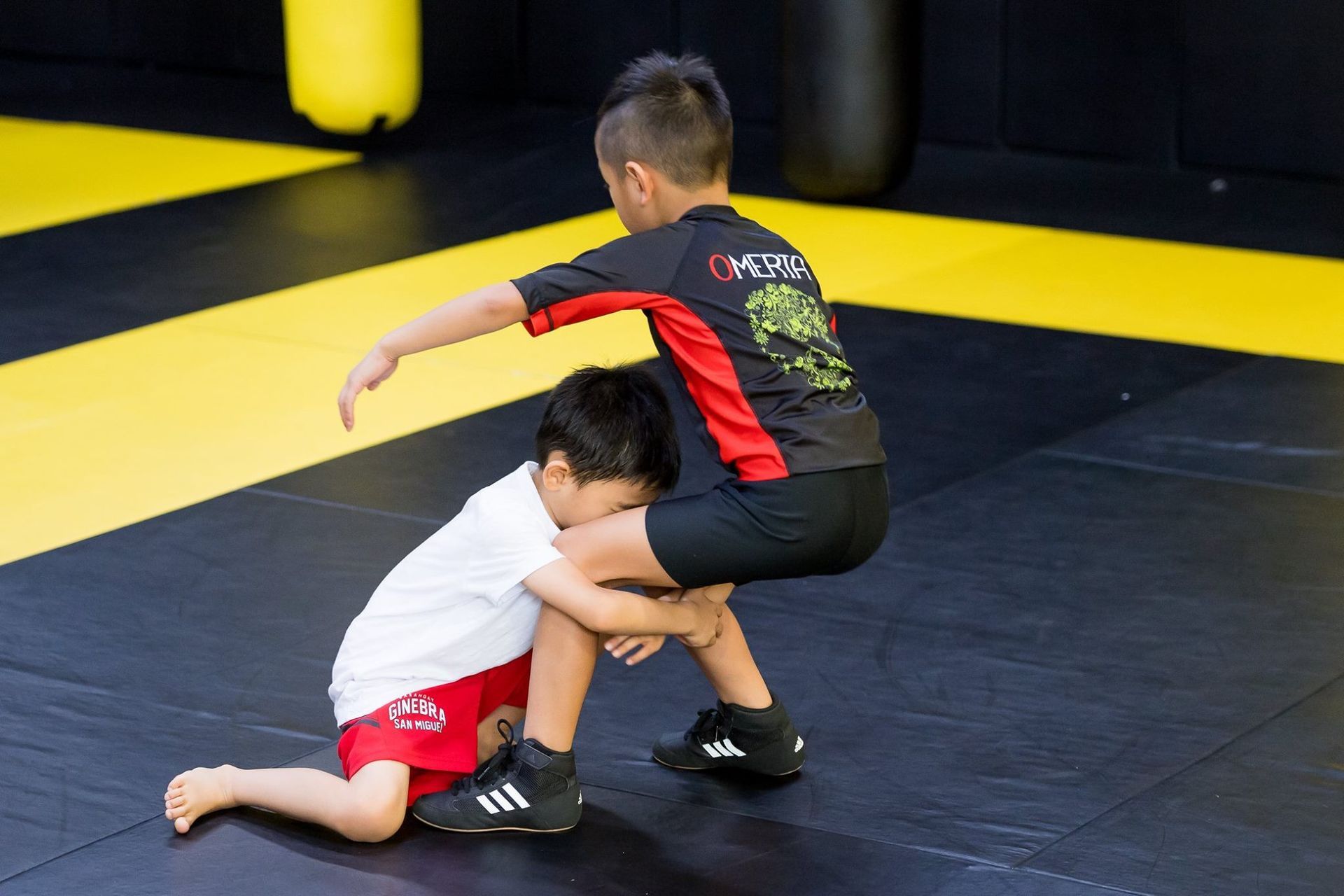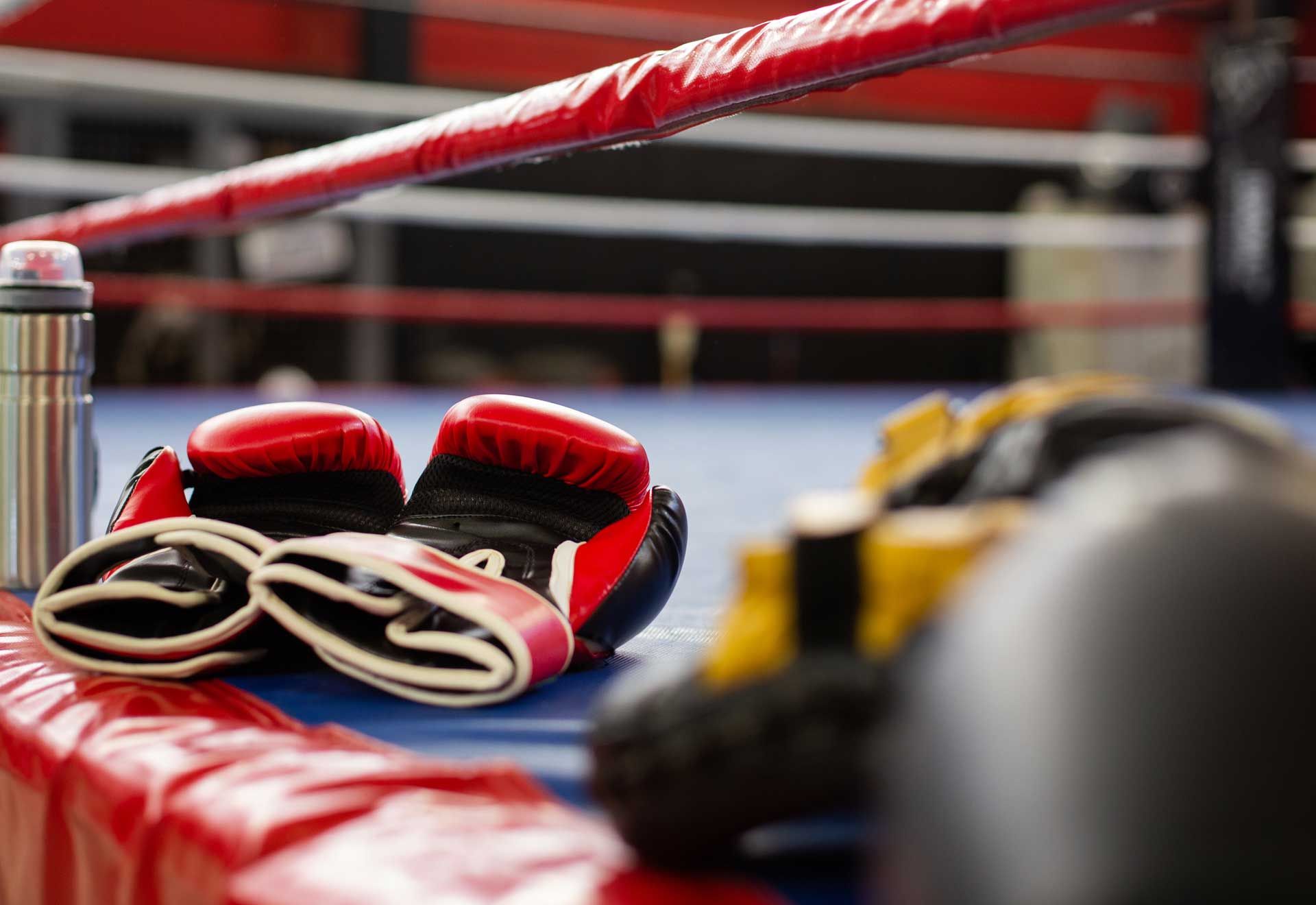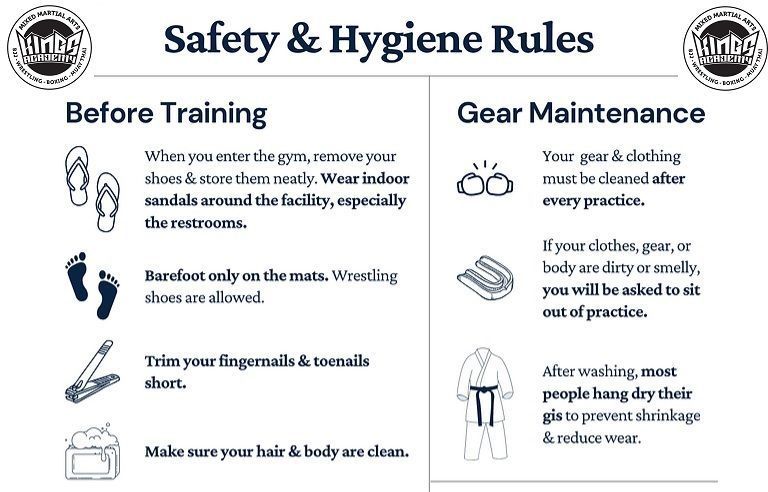Learn about Boxing
A comprehensive look at Boxing, looking at the history, training, and competition of one the oldest sports still around today. Boxing, also known as the art of self-defence, the sweet science or pugilism (fist fight), is one of the most popular sports today.
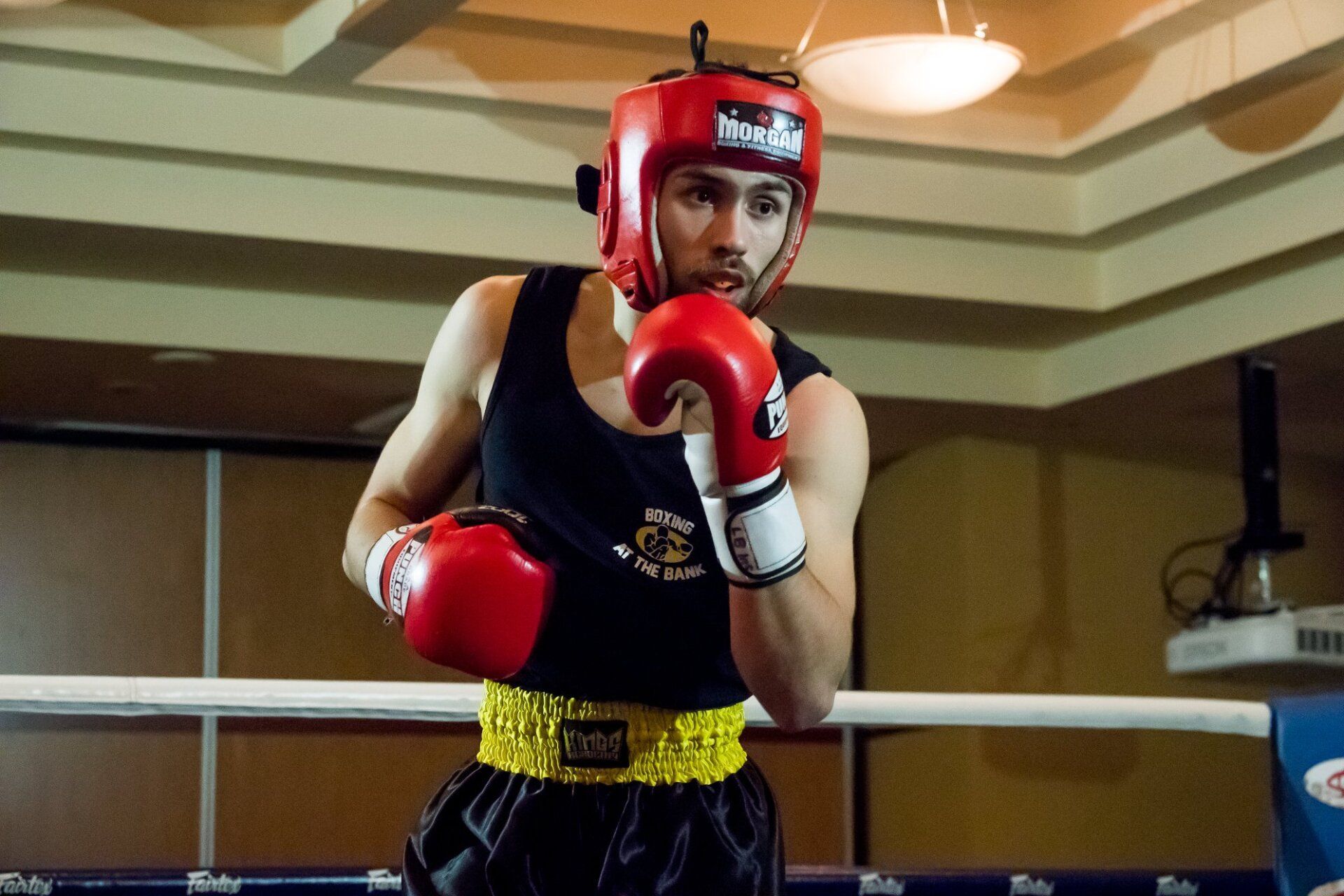
Learn about Boxing
Find out everything you need to know about Boxing
If you're interested in classes in Boxing please check out our Boxing Page
A comprehensive look at Boxing, looking at the history, training, and competition of one the oldest sports still around today.
Boxing, also known as the art of self-defence, the sweet science or pugilism (fist fight), is one of the most popular sports today.
History of Boxing
Historical evidence suggests humans have been engaging in fisticuffs in one form or another throughout history. Sumerian relief carvings depicting boxing have been found dating as far back as the third millennium BC and fighting as a form of sport has been traced back to circa 1500 BC.
Boxing took place at the Ancient Olympic Games in Greece for the first time in 688 BC (the 23rd edition of the event) and the maiden competition was won by Onomastos of Smyrna, who went on to work on the rules of the sport.
Boxing continued in the Ancient Olympic Games during the Roman period and it was part of both gladiatorial contests and military training until at least 400 AD. Over time, the leather wrapping used to protect fighters’ hands was replaced by studded metal gloves. Unfortunately, this usually resulted in death for one of the fighters.
After the fall of the Roman Empire, competitive boxing mostly disappeared for several centuries. The sport resurfaced in 17th century England in the form of bare-knuckle fighting.
As boxing’s popularity grew, so did the amounts of money that wealthy aristocrats gambled on their favourite fighters. Because of this, rules were instituted, and the sport started to become more organized.
While the idea of weight classes was introduced somewhere in the early 1820’s, it wasn’t until around the turn of the 20th century that weight classes were finally standardized in an effort to even the odds between boxers in a fight.
In 1867, the Queensbury Rules were instituted, paving the way for modern boxing by standardizing ring size, length of rounds, and behaviour. The Queensbury rules also required fighters to wear gloves, forever changing the sport. Fighters could now hit harder, increasing the degree of injury that could be inflicted during a fight.
Modern Boxing
Modern boxing is often referred to as, “the sweet science.” The phrase was originally coined in the early 1800s by British sportswriter and journalist, Pierce Egan. Egan is best known for his boxing articles, in which he referred to boxing as, “the Sweet Science of Bruising” to illustrate how boxers are both tough and methodical.
Today, boxing falls into two main categories: amateur and professional. In amateur boxing, scoring is based on points rather than the physical damage inflicted on an opponent. Also, protective headgear is worn. Matches are shorter, consisting of three rounds that are each three minutes long, with a one-minute rest interval in between rounds.
On the other hand, professional boxing matches typically consist of 10 to 12 rounds. Headgear is not permitted, and fighters take much more damage. It is not uncommon for boxers to begin their career as an amateur fighter before turning pro.
Objective
A boxing match is held in a square ring, with two corners marked with red and blue colour belonging to the fighters’ teams, where under the supervision of a judge and a commission, two athletes compete using fair fighting techniques under a set of rules.
The basic objective of boxing is knocking down the opponent using a combination of techniques, under the supervision of a judge and a commission and following a set of rules. Reading further, you will get to know the essentials of boxing, the rules, as well as how it’s played.
Boxing Ring History
The term “ring” has its origin from the early boxing fights, where a circle was drawn at the spot in which the match was held.
Boxing Ring
A boxing ring is the space in which a boxing match is held. A modern ring is set on a raised platform, it is square with a post at each corner to which four parallel rows of ropes are attached with a turnbuckle. Two of the corners are coloured red and blue, belonging to a respective player. Unlike the wrestling ring, the boxing ring ropes are connected between the posts. The floor of the ring must have around 1 inch (25mm) of padding covered with canvas.
Dimensions of a Boxing Ring
The size of the boxing ring may vary depending on the type of tournament and relevant governing body. The standard ring is between 16 and 25 feet (4.9 and 7.6 m) to a side between the ropes with another 2 feet (0.61 m) outside. The platform of the ring is generally 3 to 4 feet (0.91 to 1.22 m) from the ground with the posts rising around 5 feet (1.5 m).
The ropes are around 1 inch (25 mm) in diameter and held up on posts rising around 5 feet (1.5 m) at heights of 18, 30, 42, and 55 inches (.46, .76, 1.07, and 1.37 m).
Boxing - Equipment
Boxing requires certain basic equipment for training:
Boxing Gloves. 12-16 oz. boxing gloves. People use different weights for different things but if you are looking for an all-in-one glove for both hitting bags and sparring you can’t go wrong with a 16oz. If you have smaller hands or are primarily hitting speed bags then consider something lighter.
Hand Wraps. To prevent injury, you wrap these cloth and elastic strips around your hands and wrists for training and competition. They compress your hands and provide wrist and knuckle support. Get them, learn how to wrap your hands and you will save yourself from lots of pain.
Boxing shoes. Boxing shoes are tight-fitting, lightweight, high-top shoes with thin rubber soles designed for fast footwork, traction, ankle support and breathability. You don’t necessarily need them when first starting out but once you pick up a pair, you’ll wonder how you ever boxed in running shoes. Also, many gyms won’t let you train in street shoes.
Protective gear. A mouth guard is essential when sparring or in competition to protect your teeth and reduce concussion risk. Don’t be a fool and get a tooth knocked out. Other protective equipment for sparring includes a cup and headgear to protect your groin, face and ears.
Skipping rope. Jumping rope is a fundamental part of conditioning and training. There are plenty of fancy boxing jump ropes but pretty much anything will do when you are starting out.
Popular Terms in Boxing
Before being able to play or watch boxing, you should be familiar with the following terms, which are most frequently used during boxing matches.
Blocking − The technique to prevent an opponent's punch from landing cleanly on the head or torso by using the hands, shoulders or arms.
Bout − A short spanned match conducted between two competitors with a timeline of four three-minute rounds, and with a break of one-minute between each round.
Break − A referee's command for boxers to free from a prolonged trap or a clinch.
Caution − An admonition to the boxer by a referee. Three cautions are issued before a warning. Mostly, the player is cautioned when he commits a foul.
Clinch − When two boxers are holding, or trapping each other for a longer duration, without any punches or fight involved.
Down − A boxer is considered "down" if he touches the floor with anything other than his feet or if he goes outside the ropes after receiving a punch. A boxer is also technically "down," even if he hasn't fallen but takes a serious blow or blows to the head and the referee steps in to stop the action.
Foul − An infringement of boxing rules.
Hook − A short power punch in which the boxer swings from the shoulder with his elbow bent, bringing his fist from the side toward the center.
In-fighting − Boxing at close range.
Jab − A quick, straight punch thrown with the lead hand.
Knock Down − A boxer is technically "knocked down," even if he hasn't fallen but he takes a serious blow or blows to the head and the referee steps in to stop the action.
Neutral Corner − One of the two corners in the ring that do not belong to either fighter.
Rabbit Punch − This punch is considered to be against the game rules or as being illegal, as one of the competitors lodges a punch to the back of the opponent’s head or body (mostly kidneys). This punch is mostly delivered when the boxers are having a wrestle “inside.”
Saved by the Bell − When a fighter is on the verge of being knocked out, or is knocked out just as the bell sounds, so that the fighter does not lose and has a minute to compose himself.
Standing 8 Count − This term is used when one of the boxers is unable to continue the fight due to reasons like being injured, cannot continue, etc. In this case, the referee stops the fight and starts a count till eight, giving the player a chance to either continue or declare closure.
Uppercut − This is one of the punches that is landed on the guard of the boxer from below in an upward direction.
Warning − An alert given by the referee to the boxer in case of any fouls or extension of three warnings. Once the referee indicates a warning then the ringside judges will decide about issuing points. The opponent who is issued the warning, loses the bout or is disqualified.
Weaving − A method used by the boxer to escape the anticipated punches through twist and turn movements.
Boxing - How to Play?
The objective of boxing, as mentioned before, is to knock out the opponent, making him unable to stand until the referee counts to ten. Another way of winning in boxing, is by scoring points.
Shadow Boxing
Shadowboxing is a training method that accompanies the martial arts, especially boxing. It’s typically used as a warm-up to gradually increase heart rate and prepare the muscles for training. In shadowboxing, a contender moves around the room and throws punches at the air in a way that mimics fighting or sparring.
Shadow boxing is incredibly versatile because of its freestyle nature and simplicity. You can practice anything you want without any distraction. Shadow Boxing enhances form, technique, movement, and even helps you build muscle memory and mindfulness. Not to mention, it’s great exercise and warm up for training.
Boxing Sparring
Sparring is "practice fighting" with the aim of training skills and fitness, not to determine a winner. Sparring gloves are often more padded than gloves used in actual bouts. Sparring partners sometimes agree to practice specific types of punches or defence moves to focus their training.
Ideally, you will want to have the fundamentals incorporated into your daily training routine, at the very least. Things like basic offense and combinations, defensive techniques like slipping, parrying and countering, as well as basic tactical strategies. The last thing you want to do is to rush into sparring, so make sure you’re at a level where you’re confident enough in your abilities, at least in principle.
Sparring is probably the most important training aspect of being a fighter. Sparring goes beyond punching and defence. This is where you actually learn to fight. You get to see what works and what doesn’t. You find out exactly what needs to be improved. Unfortunately, this isn’t the case for many beginners—they only find out how tough they are or aren’t.
Learn how to spar correctly and you will become a better fighter in much less time. Don’t waste time by trying to win all your sparring matches. Winning is easy…just keep doing something you’re already good at and do it against an inferior opponent. Sparring properly however, requires you to control yourself a bit and focus on skills that need more practice. Sure you might get hit but that’s what controlled sparring is for. Controlled sparring allows you to work on new techniques without getting beat up for making mistakes.
Controlled sparring is what skilled boxers use to develop their boxing skills. That’s the secret. The best gyms I’ve seen spar softly. Sure, they might look like they’re going intense but they’re really not. It’s fighters who are comfortable with each other and trust each other to pull back when exchanges are won and so they are able to go a little faster and a little harder. However, their increased intensity is STILL controlled. They are not wailing on each other or chasing each other into the corners and trying to get a KO. They are landing beautiful combinations and avoiding many punches along the process. Their footwork isn’t panicky, it’s smooth and relaxed but swift when it needs to be. There is a time and a place for hard sparring, generally when you’re preparing for fights. But if you want to have long and successful career, smart sparring is the way to go.
Sparring is a time for you AND your opponent to help develop each other’s skills by practicing real boxing moves in a real boxing environment. It is not the time for both fighters to try and beat each other up. Having an opponent close up their defence and run from you will not develop your skills in the ring. Give him a chance to work and be the best he can be, so that he may push you to be the best you can be. Save that “winning” attitude for competitions.
To learn more about Sparring check out our Blogs:
Learn about Sparring: https://www.kingsacademy.com.au/learn-about-sparring
Don’t be afraid of Sparring: https://www.kingsacademy.com.au/don-t-be-afraid-of-sparring
Boxing Styles
Each boxer develops their own personal style. However, there are three main styles of boxing that are widely recognized:
In-fighter (a.k.a. swarmer). In-fighters prefer to stay close to their opponent and apply pressure with a constant stream of attacks. In-fighters are usually fast on their feet and use mostly uppercuts and hooks. This style is often favoured by shorter fighters with a shorter reach. Famous in-fighters include Joe Frazier, Mike Tyson, Manny Pacquiao and Gennady Golovkin.
Out-fighter (a.k.a. out-boxer). Out-fighters are also quick on their feet but like to maintain some distance from an opponent. Out-fighters rely on longer-range punches such as jabs and crosses. Some famous out-fighters are Muhammad Ali, Sugar Ray Leonard and Floyd Mayweather Jr. Out-fighters usually tend to wear down their opponents.
Slugger (a.k.a. brawler or puncher). What sluggers lack in finesse they make up for in raw power. Sluggers tend to be slow and fairly predictable but are often able to knock out opponents with a single punch. George Foreman and Vitali Klitschko are notable sluggers.
The effectiveness of these styles against each other is often compared to the rock, paper, scissors game because each has advantages over one style but disadvantages over another. For instance, the strength of a slugger can overcome an in-fighter, while the in-fighter’s speed and close-in fighting style tends to be successful against out-fighters. However, out-fighters are faster than sluggers, and an out-fighter can often wear down a slugger, as long as they can avoid the slugger’s knockout punch.
Because of this, fighters who can combine multiple styles tend to be more versatile and are more successful than those who stick to one style.
Getting Ready
Before every match, there are a few steps that needs to be completed −
Registration check − A registration book is the identification of a boxer, and it is required to be shown before every competition. It documents your weight, information about your opponents and results of the matches played.
Weigh-in − This is required so the fighter may be placed in the correct weight category.
Physical examination − After the weigh-in a physician examines the capability of a boxer to compete. The things they check consist of −
Blood pressure
Breathing
Condition of hands and face
Wrap check − Usually the judge signs the wraps, meaning the boxer has followed the given procedures and rules. After the signing, the boxer is sent to the host, who gives the boxer either red or blue gloves, depending on the assigned corner.
As the boxers get into the ring, and sit on their assigned posts, the judge comes to make a final check if the boxers are wearing a mouthpiece and the correct size of gloves (and head gear if amature).
The boxers are introduced and called in the centre of the ring where they touch gloves, a sign of sportsmanship.
The boxers return to their corners and wait for the bell to ring to mark the beginning of the fight.
Quick Glimpse of the Match
The players must fight a series of rounds (normally 3 for amateur and 10-12 for professional) with one-three minutes intervals. A bell is rung to signify the start of each round.
There is a wooden table placed at the ringside, and a ring official hits it with a hammer, to denote that there are only ten seconds left in each round.
A boxer is declared winner, when the opponent is downed and does not resume within ten counts or when the player is seriously injured (referee stoppage).
The winner of the match is declared through scoring, when there is no disqualification or any knock-outs/referee stoppage.
Scoring
Who won the round is mostly based on counting "scoring punches" - punches with the knuckle side of the fists that strike the front or sides of the opponent's body (above the belt) or head. Fouls are also tracked and affect scoring. According to the judges, these may be: the number of punches, aggression put in, control of the ring, controlling the fight tempo, and the amount of damage caused.
Scoring in professional boxing is quite different from scoring at the amateur level. It’s based on four criteria −
Clean punching
Effective aggressiveness
Ring Generalship
Defence
The scoring system maintained by the judges is the 10-point-must system. In a closed round, the winner of each round is issued 10 points, whereas the defeated boxer will receive 9 points. Similarly, the loser will receive 8 points if knocked down or taken over. Seven points if knocked down twice. Both boxers will receive 10 points each when the round is even.
A boxer is declared the winner when all the three judges are in accordance and when the boxer receives more points than the opponent. If the majority of judges declare the match tie, then the match is called for a draw.
A match can be concluded by four possible decisions of the judges −
Unanimous decision − Here all the judges are in agreement and score the boxer same and declare as the winner.
Split decision − Here, two of the three judges support one boxer, and the other one, supports the other boxer.
Majority decision − One judge draws the match, whereas the two other judges score one boxer.
Draw − This happens, when none of the judges are in agreement. One judge scores for one boxer, another judge for another boxer, and the third judge evens out the match. In this state, none of the boxers is declared the winner.
Fouls
A foul committed by a player results in the deduction of points by the judges. Committing a serious foul or committing a foul repeatedly, can result in disqualification. To prevent the fight from becoming a brawl and prevent severe injuries boxers must not −
Strike below the belt
Strike when the opponent boxer is down on the canvas
Kick
Strike with elbows, forearms or the inside of the hand (slap)
Head-butt
Biting
Grabbing onto the ropes
Poke the eye with a thumb
Wrestle, grapple or hold the opponent excessively
Boxing is played at two levels − Amateur (Olympic) and Professional boxing
Amateur boxing
Amateur boxing takes place at many events, such as the Olympic Games, Pan American Games and Commonwealth Games. The bouts are short in duration compared to professional bouts and fighters must wear protective headgear. For this reason, the winner is decided by scoring punches, meaning, when boxers connect with the knuckle portion of the gloves. Every punch that is landed either on the head or the torso of the boxer is considered as a point. The judge monitors the fight to make sure that only legal punches are dealt.
Professional boxing
Professional boxing is also called prize-fighting. It originated in the early 20th century when boxing was legalized and started to be a regulated sport. The bouts last longer than in amateur boxing, with a greater number of rounds, depending on the significance of the fight.
Protective gear is not allowed, and the boxers can take up much more damage than amateur fighters, before the judge halts the fight. Although it seems more brutal, professional fights are enjoyed much more than amateur fights.
Professional boxing Associations
World Boxing Association (WBA) − An international boxing organization that awards the WBA world championship title.
World Boxing Council (WBC) − One of the most prestigious organizations for boxing. It has over 140 countries with their flags represented on the awarding belt.
World Boxing Organization (WBO) − The organization which recognizes professional boxing world champions.
International Boxing Federation (IBF) − The federation creates different regional titles throughout the United States and other countries, to give young boxers the opportunity to participate.
Boxing – Well know Fighters and Champions
Boxing tournaments are held in different categories, depending on the weight of the competitors. Following are some of the legends of the sport. Take the time learn about the Boxing greats who helped mould the sport that we know and love today.
Muhammad Ali
Muhammad Ali, the American professional boxer is one of the most renowned heavyweight champion in sports history. He reserves the record of being the only one to have won the lineal World Heavyweight Championship title three times, in 1964, 1974, and 1978. He won several historic boxing titles and hence earned the nickname “Greatest”. His unprecedented grace and unique style made him a legend and Sports Illustrated declared him to be the "Sportsman of the Century".
Mike Tyson
Mike Tyson, often referred to as ‘Kid Dynamite’ is considered as one of the best heavyweight champions of all time and has an impressive list of accomplishments to his credit. He holds the record of being the youngest boxer to have won the World Boxing Council, World Boxing Association, and International Boxing Federation heavyweight titles at 20 years, 4 months, and 22 days old.\
Henry Jackson Jr
Henry Jackson Jr., known as Henry Armstrong, is regarded as one of the greatest boxers of all time. He not only belonged to the group of boxers who won boxing championships in three or more different divisions (there were only eight universally recognized World titles at the time) but also has the record of holding three world championship titles (featherweight, lightweight, and welterweight) at a time in 1938. Armstrong successfully defended his welterweight title 19 times and was known for his style of throwing punches from all angles.
Herbert Lewis
Herbert Lewis Hardwick, the Afro Puerto Rican boxer, was inducted into the hall of fame in 2012. He primarily fought middleweight and welterweight matches. Hardwick, who was well known by his nickname “Cocao Kid” won the World Colored Championships in both these divisions.
Joseph William Calzaghe
Joseph William Calzaghe, the former Ring Super Middleweight and light heavyweight champion, is the longest reigning super middleweight champion, having held the title for more than 10 years. He successfully defended the title 21 times, however, finally relinquished it move up to the light heavyweight division. In 2009, The Ring Magazine ranked him Number 3 in the world.
Rocky Marciano
Rocky Marciano is said to be the only boxer to have held the heavyweight title without a bout tie or defeat throughout his career. Marciano was famous for his cast iron chin and incredible endurance power. Known for his ferocious punches, he holds the highest knockout percentage of 87.75.
Floyd Mayweather
Floyd Joy Mayweather Jr. is best known as the undefeated professional five division world champion. Mayweather has 11 world titles to his credit, and has won the lineal championship in four different weight categories. He topped the list of the 50 highest paid athletes by Forbes and Sports Illustrated for the year 2012, 2013 and 2014.
Manny Pacquiao
Manny Pacquiao, the Filipino boxer is the first and the only eight-division world champion. Pacquiao, is a three-time winner of the ‘The Ring’ and ‘BWAA’ Fighter of the Year award having won in the year 2006, 2008, and 2009. The Boxing Writers Association of America, World Boxing Council, and World Boxing Organization endowed him with the title “Fighter of the Decade” for the 2000s. Forbes ranked him as the second highest paid athlete in the world in 2015.
Canelo Álvarez
Santos Saúl "Canelo" Álvarez Barragán (born 18 July 1990) is a Mexican professional boxer. He has won multiple world championships in four weight classes from light middleweight to light heavyweight, including unified titles in three of those weight classes. Álvarez is currently a unified super middleweight world champion, having held the WBA (Super), WBC, and Ring magazine titles since 2020, and the WBO title since May 2021.
Tyson Fury
Tyson Luke Fury (born 12 August 1988) is a British professional boxer of Irish Traveller descent. He is a two-time world heavyweight champion, having held the WBC and Ring magazine titles since defeating Deontay Wilder in 2020; previously he held the unified WBA (Super), IBF, WBO, IBO, and The Ring titles after defeating Wladimir Klitschko in 2015. With his defeat of Wilder, Fury became the third heavyweight, after Floyd Patterson and Muhammad Ali, to hold The Ring magazine title twice, and is widely considered by media outlets to be the lineal heavyweight champion.
Anthony Joshua
Anthony Oluwafemi Olaseni Joshua, OBE (born 15 October 1989) is a British professional boxer. He is a two-time unified world heavyweight champion, having held the WBA (Super), IBF, WBO, and IBO titles since December 2019, and previously between 2016 and June 2019. At regional level, he held the British and Commonwealth heavyweight titles from 2015 to 2016.
Gennady Golovkin
Gennady Gennadyevich Golovkin (born 8 April 1982), often known by his nickname "GGG" or "Triple G", is a Kazakhstani professional boxer. He is a two-time middleweight world champion, having held the IBF and IBO titles since 2019. He previously held the unified WBA (Super), WBC, IBF and IBO titles between 2014 and 2018 and was ranked as the world's best boxer, pound for pound, from September 2017 to September 2018 by The Ring magazine.
Roy Jones Jr.
Roy Levesta Jones Jr. (born January 16, 1969) is an American former professional boxer, boxing commentator, boxing trainer, rapper, and actor who holds dual American and Russian citizenship. He competed in boxing from 1989 to 2018, and held multiple world championships in four weight classes, including titles at middleweight, super middleweight, light heavyweight, and heavyweight, and is the only boxer in history to start his professional career at light middleweight and go on to win a heavyweight title. As an amateur, he represented the United States at the 1988 Summer Olympics, winning a silver medal in the light middleweight division after one of the most controversial decisions in boxing history.
Bernard Hopkins
Bernard Humphrey Hopkins Jr. (born January 15, 1965) is an American former professional boxer who competed from 1988 to 2016. He is one of the most successful boxers of the past three decades, having held multiple world championships in two weight classes, including the undisputed middleweight title from 2001 to 2005, and the lineal light heavyweight title from 2011 to 2012.
Miguel Cotto
Miguel Ángel Cotto Vázquez (born October 29, 1980) is a Puerto Rican former professional boxer who competed from 2001 to 2017. He is a multiple-time world champion, and the first Puerto Rican boxer to win world titles in four weight classes, from light welterweight to middleweight. In 2007 and 2009, he reached a peak active pound for pound ranking of seventh by The Ring magazine. Cotto started out his career as a hard-hitting pressure fighter but evolved over the years into a more refined boxer-puncher as he moved up in weight.
Félix Trinidad
Félix Juan Trinidad García (born January 10, 1973), popularly known as "Tito" Trinidad, is a Puerto Rican former professional boxer who competed from 1990 to 2008. He held multiple world championships in three weight classes and is said to be one of the greatest Puerto Rican boxers of all time.
Vasyl Lomachenko
Vasyl Anatoliyovych Lomachenko (born 17 February 1988) is a Ukrainian professional boxer. He is a former world champion in three weight classes, having held the WBO featherweight title from 2014 to 2015; the WBO junior lightweight title from 2016 to 2017; and the unified WBA (Super), WBC, WBO and Ring magazine lightweight titles between 2018 and 2020. Lomachenko is one of the most successful amateur boxers of all time, possessing a record of 396 wins and 1 loss, with that loss avenged twice. Competing in the featherweight and lightweight divisions, he won a silver medal at the 2007 World Championships, gold at the 2008 European Championships, consecutive gold at the 2008 and 2012 Olympics, and consecutive gold at the 2009 and 2011 World Championships. He is known for his exceptional hand speed, timing, accuracy, creativity, athleticism, defense and footwork.
Lennox Lewis
Lennox Claudius Lewis CM CBE (born 2 September 1965) is a former professional boxer who competed from 1989 to 2003. He is a three-time world heavyweight champion, a two-time lineal champion, and remains the last heavyweight to hold the undisputed championship. Holding dual British and Canadian citizenship, Lewis represented Canada as an amateur at the 1988 Summer Olympics, winning a gold medal in the super-heavyweight division after defeating Riddick Bowe in the final.
Wladimir Klitschko
Wladimir Wladimirowitsch Klitschko[a] (born 25 March 1976) is a Ukrainian former professional boxer who competed from 1996 to 2017. He held the world heavyweight championship twice, including the unified WBA (Super), IBF, WBO, IBO, and Ring magazine titles. A strategic and intelligent boxer, Klitschko is considered to be one of the best heavyweight champions of all time. He was known for his exceptional knockout power, using a strong jab, straight right hand and left hook, as well as great footwork and mobility, unusual for boxers of his size.
Oscar de la Hoya
Oscar De La Hoya (born February 4, 1973) is an American former professional boxer. As a boxer, he competed from 1992 to 2008, winning 11 world titles in six weight classes, including the lineal championship in three weight classes. He is ranked as the 12th best boxer of all time, pound for pound, by BoxRec. Nine of his victorious fights received a 5-Star rating from BoxRec. De La Hoya was nicknamed "The Golden Boy of boxing" by the media when he represented the United States at the 1992 Summer Olympics where, shortly after having graduated from James A. Garfield High School, he won a gold medal in the lightweight division, and reportedly "set a sport back on its feet.
What next?
Now that you’ve learnt about Boxing read our Blog on why you should start Boxing training!
Ten reasons you should try Boxing:
https://www.kingsacademy.com.au/ten-reasons-you-should-try-boxing
If you’d like to come in and do a week free trial at Kings follow this link and enter your details:
https://www.kingsacademy.com.au/week-free-trial
We look forward to seeing you at training.
If you enjoyed this article please check out our other related blogs:
If you're interested in classes in Boxing please check out our Boxing Page
Regards,
Kings Academy
Kings Academy is the Premier Martial Arts Academy servicing Liverpool and South Western Sydney with classes in BJJ (Brazilian Jiu Jitsu), Muay Thai, Boxing, Wrestling, and MMA (Mixed Martial Arts)

